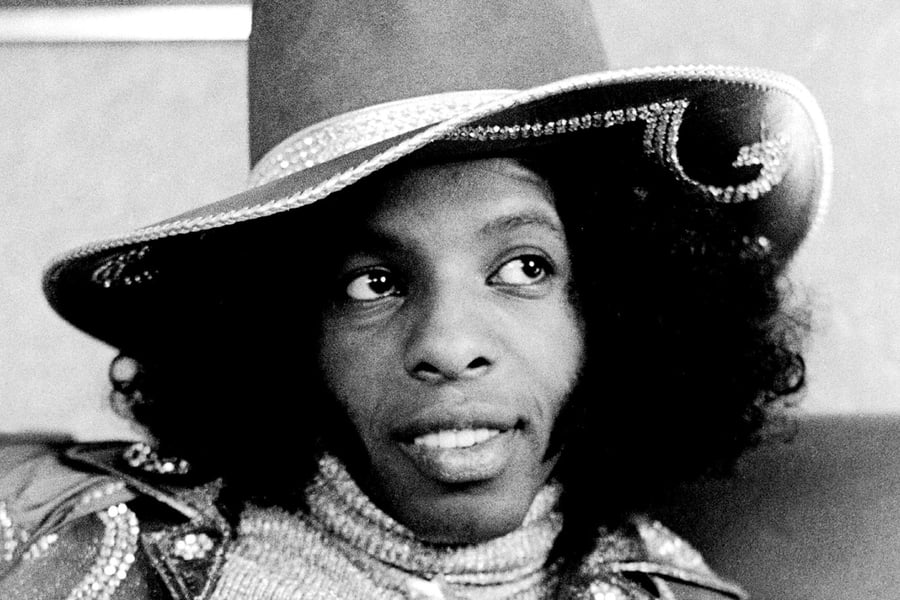Sly Stone, one of the most influential and groundbreaking musicians of the late Sixties and early Seventies who smashed the boundaries of rock, pop, funk, and soul, died on Monday. He was 82. The cause of death was a “prolonged battle with COPD and other underlying health issues,” according to a statement by his family.
“It is with profound sadness that we announce the passing of our beloved dad, Sly Stone of Sly and the Family Stone,” Stone’s family said. “Sly passed away peacefully, surrounded by his three children, his closest friend, and his extended family. While we mourn his absence, we take solace in knowing that his extraordinary musical legacy will continue to resonate and inspire for generations to come.”
The family added that Stone “recently completed the screenplay for his life story, a project we are eager to share with the world in due course.”
At the peak of his success, when hits like “Dance to the Music” and “Everyday People” were high on the charts, the wildly inventive musician and singer presented a glowingly optimistic image in step with the times, bringing together Black and white audiences, uplifting crowds with electrifying shows. But the unpredictability that was the core of his genius gave way to a long decline, as his personal demons destroyed what he had once been.
Born Sylvester Stewart in Texas in 1943, Stone started making music with his siblings as a child: The Stewart Four (Sylvester, his sisters Rose and Vaetta, and his brother Freddie) made their first single, “On the Battlefield,” in 1952. He moved to California with his family as a kid, and later became a familiar voice in the Bay Area’s music scene. As a staff producer at Autumn Records, he put together hits like Bobby Freeman’s “C’mon and Swim”; he also produced “Somebody to Love” by Grace Slick’s pre-Jefferson Airplane band, the Great Society. He was also a DJ on KSOL and KDIA, and later noted that “in radio, I found out about a lot of things I don’t like. Like, I think there shoudn’t be ‘Black radio.’ Just radio. Everybody be a part of everything.”
Stone’s own band, Sly & the Family Stone, came together over the course of 1966 and 1967. It really was a family of sorts: Sly and his siblings Rose and Freddie were joined by cousins Greg Errico and Jerry Martini, as well as bassist Larry Graham and trumpeter Cynthia Robinson. The Family Stone’s breakthrough hit was 1968’s “Dance to the Music,” in which their voices and instruments, high and low, each took a turn in the spotlight. A racially mixed band with male and female members, playing soul-infused rock together was a rare sight at the time — a utopian vision of what pop music could be.
Hits like “Life,” “Stand!,” “Everyday People,” and “Hot Fun in the Summertime” followed: all anthems of solidarity and joy that acknowledged the pain and frustration of the times and encouraged their audiences to transcend it. Sly & the Family Stone’s soaring performance of “I Want to Take You Higher” at Woodstock in 1969 was a triumph of that era, and the band finished the decade with an enormous hit: “Thank You (Falettinme Be Mice Elf Agin),” whose joyful funk masked the existential horror and lacerating sarcasm of its lyrics.
Love Music?
Get your daily dose of everything happening in Australian/New Zealand music and globally.
Their next album was supposed to be called The Incredible and Unpredictable Sly & the Family Stone — a sideways reference to Stone’s habit of blowing off gigs. He finally released his masterpiece, There’s a Riot Goin’ On, in late 1971. Recorded with help from Bobby Womack and an early drum machine, it was a bleak, scarred, wobbly vision — the soured remains of the Sixties dream. “I think that’s kind of his like, help the medicine go down approach,” Questlove told Rolling Stone in March. “He paints a very dark, lyric, paranoia, self-confessional thing almost in every record, but it’s so happy-sounding.”
The Family Stone disintegrated over the next few years, as Sly sank deep into drug abuse and became even more erratic. He married Kathy Silva on stage in front of a crowd of 20,000 at a sold-out Madison Square Garden show in 1974, but within months, the band had broken up, and the marriage, which produced a son, Sylvester Jr., didn’t last much longer. “He beat me, held me captive, and wanted me to be in ménages à trois,” Silva said years later. “I didn’t want that world of drugs and weirdness.” Sylvia left in 1976. Sly had two more children, Sylvette and Novena Carmel.
Sly persevered, making one attempt after another to win back the public: His 1976 album was called Heard Ya Missed Me, Well I’m Back, and the one that followed it three years later Back on the Right Track. After 1982’s half-finished Ain’t But the One Way, he never released another album of new, original material, despite persistent rumors that he was working on the magical record that would get his career back on its feet. He collaborated with George Clinton, on whom he’d been a huge influence; he turned up for guest vocals on records by the Bar-Kays and Earth, Wind and Fire.
Stone’s personal troubles continued. He was arrested for cocaine possession multiple times in the 1980s, and he served 14 months in a rehab center beginning in 1989. Between Sly & the Family Stone’s 1993 induction into the Rock & Roll Hall of Fame and the 2006 tribute to them at the Grammy Awards (for which Sly appeared for a few minutes with an enormous blond mohawk, then wandered off), he all but vanished. Interviewed by Vanity Fair in 2007, he claimed he had “a library” of new material, “a hundred and some songs, or maybe 200.” In 2011, the New York Post reported that he was living in a camper van in Los Angeles; that same year, he released I’m Back! Family & Friends, mostly lackluster new rerecordings of his Sixties classics.
But the specter of his glory years remained. Stone’s great 1960s and early-Seventies records inspired Miles Davis and Herbie Hancock to incorporate electric instruments and funk grooves into jazz; Prince and the Red Hot Chili Peppers and the Roots have all covered Sly & the Family Stone songs.
A little over a year after the release of Stone’s autobiography, Thank You (Falettinme Be Mice Elf Agin), a documentary, 2025’s Sly Lives! (aka the Burden of Black Genius), reexamined Stone’s legacy. The film, directed by Questlove, focused on how Stone’s legacy and influence continues to reverberate through popular music along with how Stone carried the weight of that influence personally until it became a burden.
It featured commentary from George Clinton, Chaka Khan, D’Angelo, Q-Tip, and Family Stone members Larry Graham and Jerry Martini, among several others. “I was a white man trying to be Black,” Martini said in the film. “[Sly] was a Black man trying to be everything.”
“My intent was always to use Sly Stone to tell our story, my story, D’Angelo’s story, Lauryn Hill’s story, Frank Ocean’s story,” Questlove told Rolling Stone. “When you’re talking about ‘blowing it,’ a lot of times the fear of failing or the fear of returning to where you came from — which is the very bottom — causes you anxiety about your future, and then causes you to fumble it.”
Speaking to Rolling Stone, Questlove spoke of how positive Stone was feeling in recent days. “He’s probably in the best mind state and condition that I’ve experienced in a minute,” Questlove says. “We talk weekly. So I think he’s now in a mental headspace where he’s ready. He’s definitely excited about the new music.”
From Rolling Stone US



































